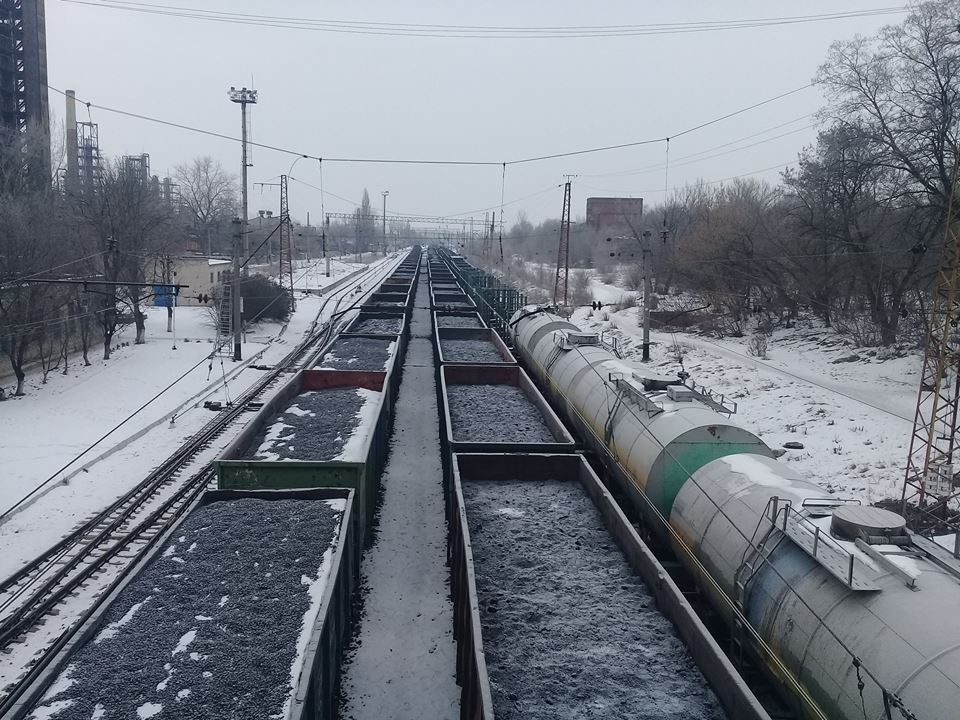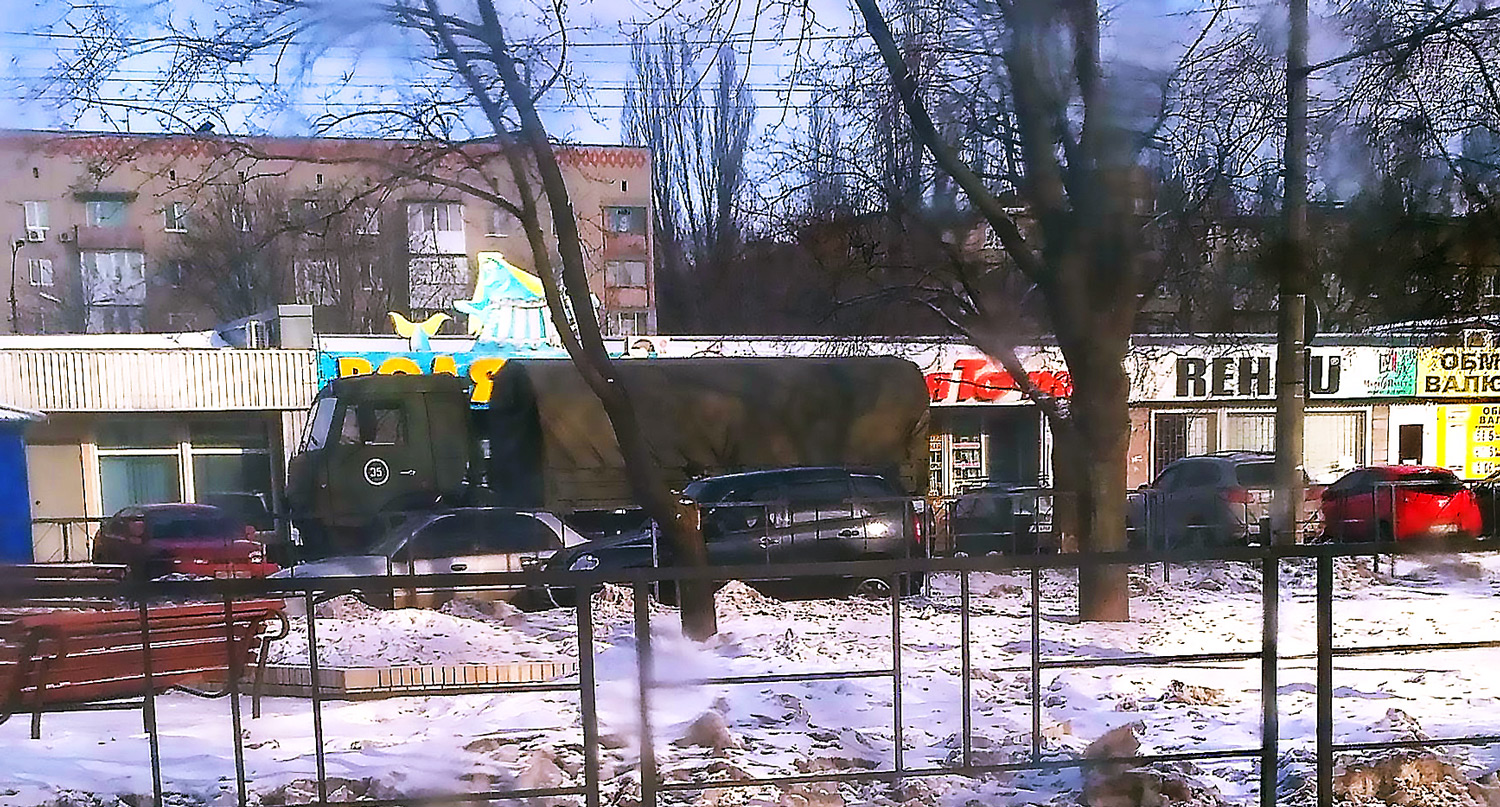The blockade participants insist that trade with the occupied territories sponsors the terrorists from the so-called republics which lead a war against Ukraine, and that it’s being covered up by Ukrainian authorities, who profit from it.
This has stalemated the Ukrainian energy sector.
On the one hand, the blockade raised important questions on the connections between the Ukrainian authorities, occupants, and the war and made it clear that trade with the so-called republics should not be taking place. On the other hand, the state authorities insist that the whole energy sector in Ukraine is under threat because it is dependent on anthracite from the occupied territories.
Let’s take a closer look at the main aspects of the story.
Anthracite
Ukraine has 14 big thermoelectric power stations. They belong to 3 companies – 2 to Donbasenergo (belongs to the son of disgraced president Viktor Yanukovych), 3 to Centrenergo (state-owned) and 9 to DTEK (owned by richest Ukrainian oligarch Rinat Akhmetov). 7 out of 14 stations work on anthracite.
The state’s Centrenergo is the most dependent on this kind of coal. Over the last two years, the state has not devoted proper attention to the dependency problem and it hasn’t been solved. Instead, new corruption schemes appeared in the energy sector.
Ukraine used to mine anthracite on the territory of Donetsk and Luhansk Oblast which now are occupied. Russia and the South African Republic are among other major suppliers of the anthracite to Ukraine.
A shady formula for energy prices
Because of Ukraine’s dependence on coal from the occupied territories, experts stressed the need to diversify existing energy sources emerged from the very beginning of the conflict in Donbas. However, their reasoning fell on stony ground:
“The energy unit of the government did not hear the experts advice, didn’t diversify, and focused only on buying anthracite coal from areas uncontrolled by the Ukrainian government. Therefore, we have this result now,” Volodymyr Omelchenko, director of energy programs of the Razumkov Center, told Deutsche Welle.
The state took steps to solve the problem only two years later by importing coal from The Netherlands, on April 2016 adopting a document that defined its price according to the world market according to what became called the “Rotterdam plus formula.” It connects Ukraine’s wholesale market price for electricity to the world API2 index, and calculates the price for the coal as yearly average:
the cost for coal in the ports of Amsterdam – Rotterdam – Antwerp + the cost for delivery to Ukraine + the cost of transshipment in the port.
However, a few aspects of the formula suggest that its creators had questionable motives. As censor.net reports, the API2 index shows the price for light coal fractions, not anthracite, and it was clear from 2016 that the index will grow together with rising world oil prices. However, it is used to establish the price for all thermal power – from stations using both the imported anthracite and the light coal extracted in Ukraine. Furthermore, the same report suggests that the formula is a work of fiction and Ukraine’s energy tariffs are still being established manually by Ukraine’s energy regulator like 25 years ago – they were increased by 60% during 2016, leading to rising protest moods among the already impoverished population.
Ukrainian energy experts are confident that the formula enables additional unfounded profits for thermal power enterprises, in particular – for Ukraine’s richest oligarch Rinat Akhmetov, who controls about 70% of the field.
Politicians who supported the blockade initiated by the activists made eliminating the corruption schemes in the energy sector their primary demand. However, the blockade activists themselves had demands which are unrelated to the energy sector.
Stopping the “bloody trade”
With the slogan “Stop the bloody trade,” the blockade was launched on January 25. It cast a light on the manipulations surrounding the coal trade with occupied territories. The activists claim that while Ukrainians are dying at war and a half of the population lives in poverty, oligarchs increase their wealth.
According to them, at the end of 2016, in just over a year, the Security Service of Ukraine issued nearly 100,000 permits for the transport of various categories of wholesale goods into and from the so-called “LDNR” (“Luhansk and Donetsk People’s Republics”).
The activists claim that 47% of the value of coal that Ukraine purchases from the occupied territories makes its way into the budget of the so-called “people’s republic.”
Together with the blockade, another movement calling itself the “anti-blockade” emerged. Allegedly, the main force who would physically oppose the blockade are the employees of the blocked enterprises and the law enforcement. On February 6 clashes erupted between the two camps, and on 28 February clashes resumed, with Avakov encouraging the government to forcefully dispel the blockade. However, human rights activists suspect that this anti-blockade is guided by a third force aiming to escalate the conflict. The blockade activists themselves are confident that the blockade-discrediting campaigns are organized by the President’s Administration.
So far only 3 out over 10 railway lines in Donbas and a few highways were blocked.
On February 19, the blockade supporters took to the governmental buildings in Kyiv, with about 200 activists of the blockade demanding the state to stop trading with the terrorists from the so-called republics. The protest ended up with clashes between the police and the activists.
The MPs of the Samopomich faction Semen Semenchenko and Yehor Sobolev, who were among the blockade’s initiators, took an active part in the protests. Apart from them, the blockade was supported by UKROP (associated with the oligarch Ihor Klomoyskyi), Rukh Novyh Syl (Mikheil Saakashvili), Batkivshchyna (Yuliya Tymoshenko), and Democratic Alliance parties.
The blockade hurt Akhmetov’s enterprises, and the state warns of dramatic consequences for the whole country
The relatively small scale of the blockade casts doubts on the intentions of its initiators. Experts debate what it is really about – a reallocation of resources, internal disputes between oligarchs Ihor Kolomoyskiy and Akhmetov, the desire to harm the rating of the current government which might lead to the early parliamentary elections, or whether Russia uses the blockade participants for its own purposes altogether.
One thing is clear – so far the blockade has affected Akhmetov’s business. Two large enterprises of his Metinvest on the occupied territories have stopped production – Yenakiyevo Steel Plant and the Krasnodon Coal Company. The Myronivska power plant, belonging to Akhmetov’s DTEK, faced the same fate. On “LDNR” territory, the Industrial Union of Donbas’ Alchevsk steel mill, a coke plant, and the Public Company Ecoenergiya stopped their work. Their major shareholders are the Donetsk oligarch and MP Serhiy Taruta as well as a group of Russian investors. Also, the Donetskstal steel plant belonging to the Russian businessmen Viktor Nusenkis completely stopped production.
The Ukrainian government claims the blockade harms the whole Ukrainian energy sector, metallurgy, labor market and export policy. Ihor Nasalyk, Minister of Energy and Coal Industry, warned that Ukraine’s energy grid is under threat, that the diversification of coal will mean buying it at more expensive prices in Russia, that the blockade harms Ukraine’s exports and employment.
The Minister of Internal Affairs Arsen Avakov also joined the discussion, blaming the activists of the blockade in harming citizens on government-controlled territories, and reminded that Ukraine already buys coal from Russia, and that the gas Ukraine buys from Slovenia comes from Russia too, which essentially finances Ukraine’s aggressor.
A lack of a long-term strategy, not the blockade, stands in the way of Ukraine’s energy independence
While criticizing the blockade, the government forgets that at the beginning of the conflict in 2014 it itself opposed trading with the so-called republics. Then General Prosecutor Vitaliy Yarema spoke in no uncertain terms that buying coal from the occupied territories is equal to “financing terrorism.”
However, in the two years that followed this statement, the state had developed no strategy to bring Yarema’s words to life. Moreover, it supported the opposite.
Currently, the companies on both sides of the front trading with each other aren’t doing anything illegal – Ukraine hasn’t adopted legislation designating the parts of Luhansk and Donetsk Oblasts under the control of the Russian collaborators as occupied. In Ukraine’s legal framework, they are the “Anti-Terrorist Operation zone” and Ukraine’s Security Services give permission to trade there. The state reassures that the companies from the occupied territories which have business in free Ukraine pay taxes to the Ukrainian budget. However, is it possible to do business in the occupied territories without the involvement of the “authorities” of the so-called republics? This is unlikely, especially considering that cases of Ukraine paying taxes to the Russian collaborators have been revealed recently.
Read also: Blood coal: oligarchs, terrorists and POW labor in Russo-Ukrainian war
However, the lack of strategy is visible not only in the policy on the uncontrolled parts of Donbas, but in the whole energy sector.
First of all, dealing with the anthracite crisis is possible. According to experts from the National Ecological Center of Ukraine, the anthracite power plants produce less than 15% of the electricity and their power can be replaced.
Energy expert Andry Herus suggests that refurbishment of power plants from anthracite to other kinds of coal, importing the coal, buying electricity itself but not the coal, and also forming stocks with a minimum balance are possible solutions for avoiding a similar crisis in the future.
An obvious solution would be to develop alternative energy – but these expert suggestions fall on deaf ears. According to estimates of the Bioenergy Association of Ukraine, Ukraine has a chance to cut down on excessive energy use and fully replace coal with renewables by 2035, Oleg Savitskyi from the National Ecological Center of Ukraine told Euromaidan Press. Moreover, the infrastructure of Ukraine’s coal power production is terribly outdated – with an average age of 45-50 years, the main equipment of Ukrainian thermal power plants is worn out by 80-90% percent. Their hazardous emissions (dust, SO2, NOx) exceed EU norms, which Ukraine should follow according to the Association Agreement and the Energy Community Treaty, by 15-40 times.
However, so far the project of the Energy Strategy 2035 is based on the coal and nuclear power. The planned share of renewable energy is only 21% in 2035.
If Ukraine doesn’t reconsider its current strategy, energy independence will remain an elusive – and purely declarative – goal, the experts warn.





